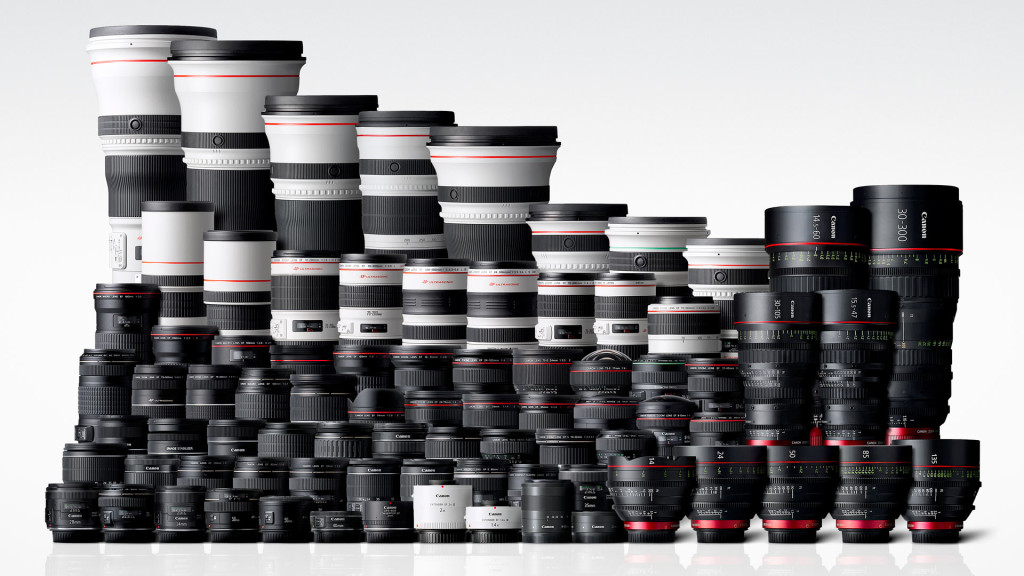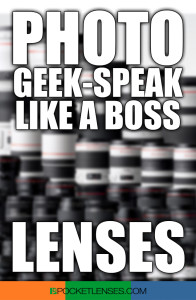Have you ever found yourself in a conversation with a group of photo geeks who love to prattle on and on about f-stop this and aperture that? Interesting as they may be, they lay-thick and rattle on the photo-lingo leaving you feeling like you have nothing to contribute to the conversation. Have you been there? Your only choices seem to be to 1) listen without really adding to the discussion, 2) contrive some poorly disguised way to leave the conversation or 3) sweat it out, attempt to chime in and hope not to be outed as the poser you feel you might be.
Never fear my friend! I’m here today to help you confidently jump into those awkward situations and throw in a little photo-speakery that’s sure to bedazzle AND more importantly, firmly solidify your photo prowess amongst your peers.
Today we tackle some often-misunderstood terms surrounding lenses.
Okay, 2 concepts to wrap your head around: Focal lengths and variability. Hang on, you’ll get through this!
1) Focal Lengths: There are 3 options here
Wide Angle Lens
A wide angle lens allows you to see a LOT of the scene. Things on the periphery could be in the frame (below: umbrellas on the right, photobag on the left). Great for indoor tight spaces, group shots to get everyone in the picture. WIDE angle shots like trying to get a landscape picture of the Grand Canyon in one picture. Focal lengths that are usually considered wide angle would be 12mm, 16mm, 20mm or so. Superwide angle is often called “fisheye”.
Telephoto Lens
Just like a telescope. Allows you to get “close” to a subject (magnify and bring the subject really close to you and fill the frame). Just like a telescope, you can’t take in a lot of the side scenery. (imagine looking through a telescope or binoculars in a small room at a group of people: you can’t get them all in the frame at the same time.) Great to get close to birds, athletes on the field or far away objects. Focal lengths that are usually considered telephoto would include 75mm, 90mm, 350mm, etc.
Normal Lens
Somewhere between the Wide Angle and the Telephoto Lens. Close to human vision angles. Focal lengths that are usually considered normal might be: 35mm, 50mm, 60mm or so.
2) Variability: To slide or not to slide (the ability to VARY the focal length … or not). 2 options here
Zoom Lens
A lens that allows you to go from one focal length and slide or zoom to another focal length. For example a wide angle lens could zoom from wide angle to normal or maybe even all the way to telephoto. Some zoom lenses may slide from normal to telephoto. Zoom means that you can slide from one focal angle to another all in one lens. Examples of zoom lenses would be: 10mm – 22mm (a wide angle zoom) or 70mm – 200mm (a telephoto zoom).
Fixed or “Prime” Lens
You can not slide or zoom. These lenses are fixed at one, and only one focal length. (i.e. a 20mm lens: wide angle prime, a 50mm lens: normal fixed lens or a 300mm lens: telephoto prime)
So there you are! Now you can throw around the lens-photo-lingo like the best of them! The next time you’re in a conversation, don’t be afraid to let fly a few terms like “16 to 35 millimeter wide angle zoom lens” or “fixed 300 millimeter telephoto prime” or really dazzle ‘em with a comment about a “28 to 250, normal to telephoto zoom!”
One final tip: If someone volleys your photo-geek-speak and returns with a “Does your lens have IS or VR and do you prefer AF to manual?” comment, AND you’re not sure what they’re talking about, DO THIS: Put your hand to your chin, look up into the corner of the room, squint ever so slightly (almost imperceptibly so) then look ’em right in the eye and respond with “You know it really depends on the situation, don’t you think?” Say it with confidence, wait for them to agree, then diplomatically excuse yourself, maybe mentioning something about an Hors d’oeuvre that you simply MUST try and move on.
“WAIT!” you say. “What IS VR AND IS AND AF AND LMNOP?” Fear not young Padawan: I’ll recharge your geek-speak superpowers with future new and fortified “Geek-Speak Like a Boss” articles. I gotcher back!







No comments yet.